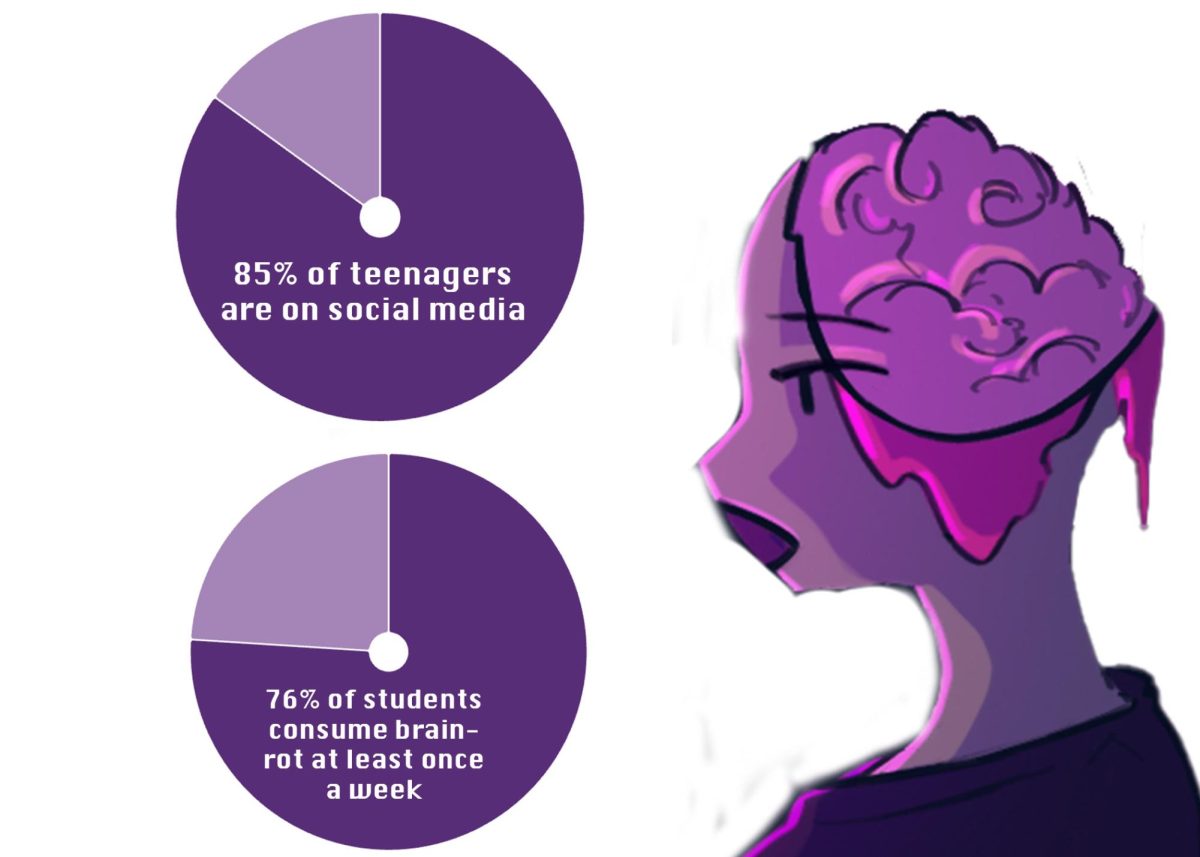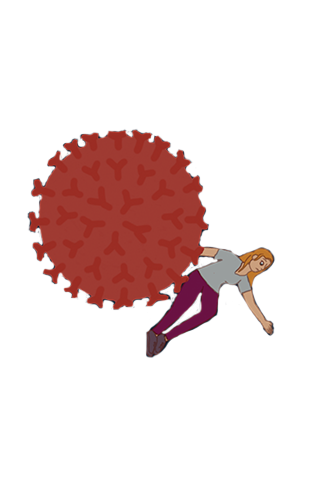Sitting in a dark room, hunched over his phone screen, junior Jack Rahija finds himself enthralled in a headache of bright colors and confusing content. The clock ticks by as the seconds swiftly turn into hours. Rahija looked up to realize that the bright sky he had just seen through his window had vanished into night. Without realizing it, he has spent his entire evening on his phone.
He was doom-scrolling again.
Rahija isn’t the only one caught in this cycle of consumption. “Brain rot” can be defined as low-quality internet content associated with decreased cognitive function for the viewer, according to South Psychologist Ricardo Camacho.
Consuming brain rot has become addictive for South’s student body, with over 75 percent of students admitting to watching brain-rot content at least once a week, and 22 percent of students admitting to watching over seven hours of brain-rot content per week, according to an unscientific survey of 324 students, conducted by The Oracle.
Yet, this occurrence is not exclusive to South. Teenagers spend an average of 7 hours and 22 minutes per day preoccupied with brain rot, according to Exploding Topics, an organization that uses data analytics, machine learning, and human analysis to identify trends across multiple industries. At South, students need to be careful about the content they consume because of the detrimental effects it can have on their physical and mental health.
After long, busy days, brain-rot content offers students instant gratification, luring them into spending hours upon hours of their free time absorbing the short-form, addictive content.
“[Brain-rot] is rewarding,” Rahija said. “It brings a quick laugh after a long day or allows us to escape certain situations when we’re feeling low.”
However, many students struggle to comprehend the long-term effects of watching mentally decaying content regularly. They find themselves captivated by it, and subconsciously change their lifestyles.
As students who consume brain rot content experience changes in their vocabulary and humor, they can often discover isolation as they struggle to connect with others who do not consume the same content, Rahija said. This social disconnection makes it difficult for students consuming the content to socialize with other students and have conversations, Camancho said.
“If you’re someone who isn’t usually social, [brain rot] is going to have more of an impact on you compared to someone who’s highly extroverted, being able to disconnect from [brain rot content],” Camancho said.
Consuming this content has further behavioral determinants beyond social skill; it also significantly harms your attention span. This can negatively affect students’ daily routines as 90-minute classes, homework, and daily chores become unbearable, creating an addiction to the instant relief of brain rot, Camacho explained.
Ignoring brain rot content is practically unavoidable. Social media apps, targeting young susceptible audiences, make scrolling effortless, leading students to eventually discover the rabbit hole of brain-rot content and become addicted to it.
“I wouldn’t blame anyone who is exposed to a lot of [brain rot],” Camacho said. “I would just say that if that’s the case, maybe it’s a good time to see what can be a replacement, to take that time to fulfill a need [instead].”














